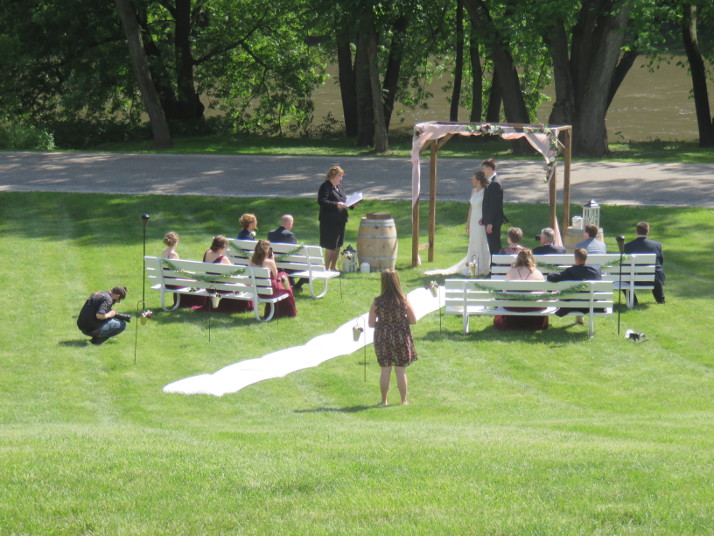Social Distancing at Weddings
Social Distancing at weddings is a daunting thought, but you can make it work. While the COVID-19 virus continues to be a threat in our country, especially to older Americans and those with some pre-existing conditions, many areas are relaxing rules about gatherings. Weddings in particular are currently allowed, but we are being asked to continue to practice social distancing to help keep each other safe and healthy.
I recently performed a small wedding where social distancing was observed during the ceremony. Each household sat on their own bench which were widely spaced. The couple and I kept our distance from each other, too, except for the few moments of the ring exchange.

The couple chose to forgo their initially planned large wedding party in order to keep the number of attendees down. This wedding took place when gathering sizes were even more limited than they are today, but you’ll need to consider the size of your wedding party given social distancing requirements. You might consider having your honor attendants (best man, etc) stand with you, and have the rest of the wedding party walk in, and then be seated with their households for the ceremony.
The couple in the ceremony above kept their original wedding date, and modified the wedding plans as needed. Other couples are making different choices including postponing to later this year or even next year, hoping that the virus won’t be an issue. There is no right answer in these uncertain times, but making the decision considering what is most important to you about your wedding day will ensure that you’re making the right choice for you as a couple.
While social distancing at weddings is possible, it is more practical if you have a smaller guest list. The ceremony space is something you have reasonable control over, setting chairs apart from each other, identifying groupings for the households you know will be attending, etc.
You’ll also need to consider your reception plans with an eye toward social distancing. Table placement, seat assignments, and certainly unstructured activities like social hour and dancing must be considered. Your wedding plans may need to be modified to accommodate current limitations, but social distancing is possible at weddings, and most importantly, you’ll still be married at the end of the day, and will be embarking on your unique marriage journey.
